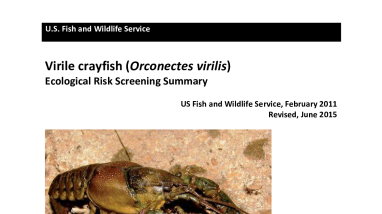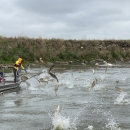Species that are considered high risk have a well-documented history of invasiveness in at least one location globally, and a high or medium climate match to the contiguous United States.
Orconectes virilis is a crayfish native to the northern US that has been introduced to other parts of the contiguous US, Mexico, and Europe. Its introductions have resulted in declines of native macrophytes, macroinvertebrates, and fish. The species is known to carry and/or be susceptible to two OIE-reportable diseases. High climate match and history of invasiveness argues for a high risk of spread and impact of this species. Overall risk is high.
Publication date
Type of document
High Risk
Program



